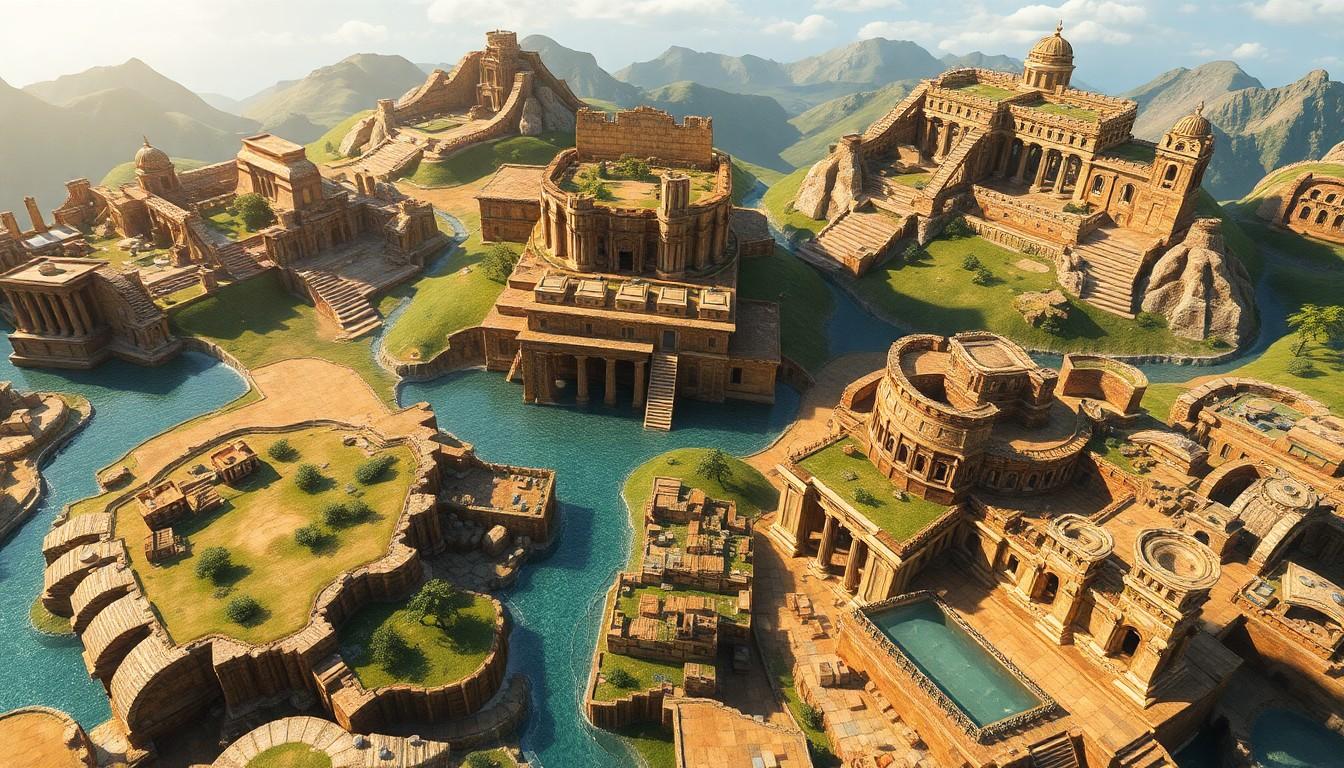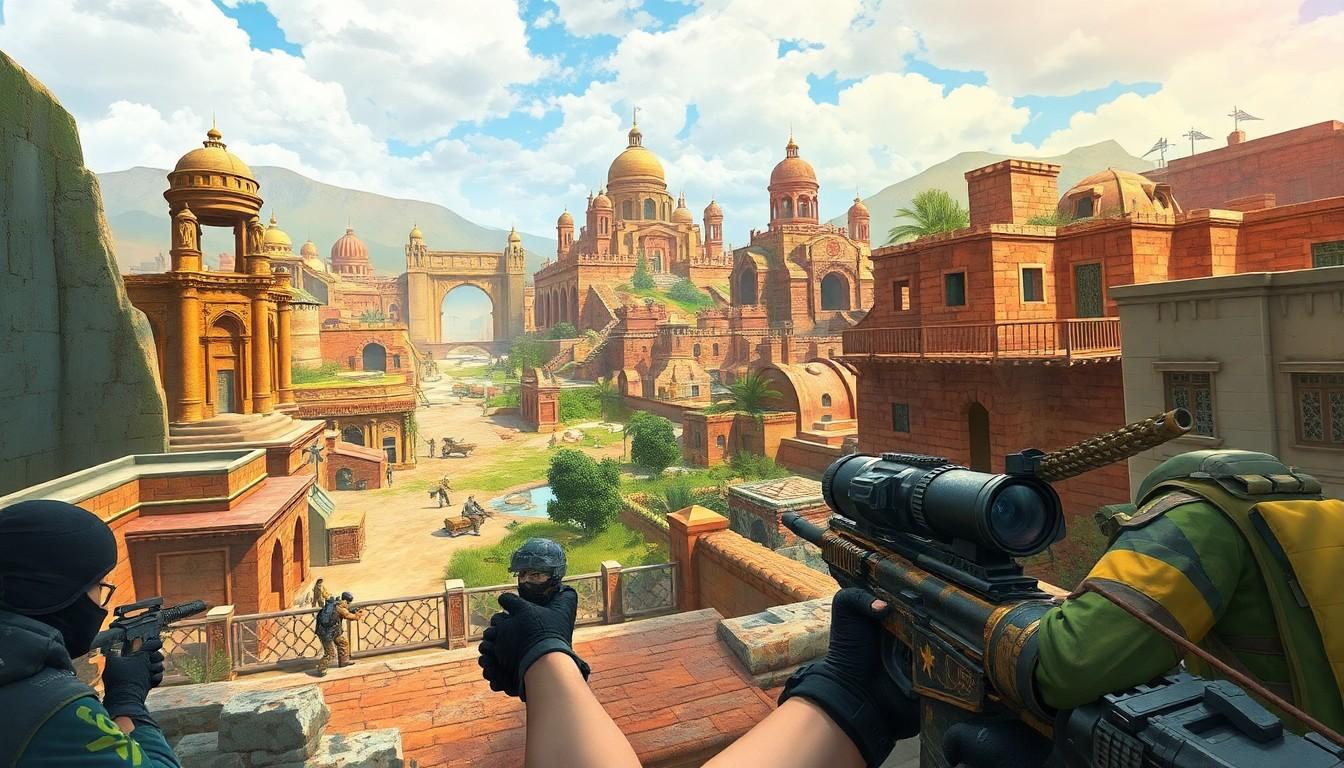In the ever-evolving world of Counter-Strike 2, maps aren’t just backgrounds—they’re the playgrounds where legends are made and dreams are dashed. Picture this: you’re sneaking through the shadows of a meticulously designed map, heart racing, hoping your next move doesn’t end in a spectacular faceplant. Whether you’re a newbie or a seasoned pro, understanding the intricacies of these maps can mean the difference between victory and a one-way ticket to the respawn screen.
From the tight corners of Dust II to the sprawling lanes of Mirage, each map offers unique challenges and strategies. Knowing where to hide, when to strike, and how to outsmart opponents can turn the tide of battle. So grab your gear and get ready to dive into the vibrant world of Counter-Strike 2 maps—where every corner could be your best friend or your worst enemy.
Table of Contents
ToggleOverview of Counter Strike 2 Maps
Counter-Strike 2 features a variety of maps, each presenting unique challenges and opportunities. These maps serve as battlefields where players must adapt their strategies based on the environment. Familiarity with specific maps, including Dust II, Mirage, and Inferno, significantly enhances player performance.
Dust II is renowned for its balanced design and strategic chokepoints. Players often engage in intense firefights around the A and B sites. This map is essential for practicing common tactics like smoke throws and flashbang placements.
Mirage, another popular map, showcases a blend of open areas and tight corridors. This environment demands strong communication and team coordination. Strategies often involve quick rotations and effective use of utility to control the middle area.
Inferno introduces verticality with its multi-level structures. Players encounter unique dynamics around the bomb sites. Proper execution of strategies such as banana control and site retakes defines successful gameplay on Inferno.
Overpass offers distinct features with its water areas and elevated pathways. Navigation requires careful positioning and map knowledge. Players benefit from understanding callouts and timing for executing pushes.
Ancient, a newer addition, combines ancient ruins with modern tactical elements. Its asymmetrical layout encourages diverse engagement strategies. Knowledge of common hiding spots is crucial for gaining an advantage.
Exploring the variety of maps in Counter-Strike 2 enriches the player’s experience. Mastering each environment equips players with the skills necessary to excel in competitive play. Understanding the nuances of these maps ensures better decision-making during matches.
Popular Map Types

Counter-Strike 2 features various map types that influence gameplay dynamics significantly. Players benefit from understanding these distinctive categories, which enhance their strategies.
Thematic Maps
Thematic maps emphasize specific narratives or atmospheres, often reflecting elaborate visuals and settings. Examples include maps resembling urban landscapes or ancient ruins. Players navigate these environments, where aesthetics play a key role in immersion. Such maps might include unique objectives that alter gameplay styles. Engaging with thematic maps allows players to explore diverse tactical approaches while enjoying an immersive experience.
Tactical Maps
Tactical maps prioritize strategic gameplay, focusing on chokepoints and positioning. Maps like Dust II and Inferno exemplify this focus, as players must utilize cover and sightlines to gain an advantage. These maps require coordination between team members to execute strategies effectively. Learning the layout of tactical maps enhances a player’s ability to anticipate enemy movements and plan counter-strategies. Mastery of these maps can lead to improved decision-making and higher success rates in competitive matches.
Map Design and Features
Maps in Counter-Strike 2 play a vital role in shaping gameplay, offering unique designs and features that dictate strategies for players.
Layout and Navigability
Players find that effective map layouts enhance gameplay experience. Each map presents a distinct navigational structure that adds to overall strategy. Straightforward layouts facilitate quick movement and communication, vital when executing team tactics. Various chokepoints create opportunities for ambushes and skirmishes, highlighting the importance of map control. Dust II exemplifies this with its simple pathing, making it an ideal training ground. Conversely, Inferno’s twists and turns challenge players to adapt tactics based on evolving situations. Understanding map flow affects engagement decisions and encourages better team coordination.
Visual Aesthetics
Rich visual aesthetics enhance immersion in Counter-Strike 2 maps. Each map features unique themes and color palettes that create a distinct atmosphere. The details in Ancient, for example, immerse players in a setting that blends historical ruins with modern combat. Brightly colored environments help players quickly identify pathways and areas of interest. Enhanced visuals not only increase enjoyment but also aid in spatial awareness during fast-paced matches. Mirage showcases this balance through its contrasting environments, compelling players to navigate with precision. Players gain a tactical advantage when engaging with immersive visuals, ultimately influencing their decisions during gameplay.
Competitive Play and Map Selection
Map selection plays a vital role in competitive play within Counter-Strike 2. Understanding maps empowers players to develop winning strategies and adapt to opponents easily.
Map Rotation in Tournaments
Tournament organizers often rotate maps to keep the competition fresh. Commonly featured maps include Dust II, Mirage, and Inferno due to their balanced gameplay and strategic depth. This rotation impacts team preparation, as players must adapt to new environments regularly. Recent tournaments highlight the significance of embracing emerging maps alongside classics. Newer maps like Anubis may introduce unexpected dynamics, requiring teams to remain versatile. Keeping a solid grasp of the active map pool ensures greater success throughout varying competitions.
Player Preferences and Strategies
Player preferences influence the success of strategies in competitive environments. Many players gravitate toward maps that suit their play styles, whether aggressive or tactical. In contrast, others focus on maps that encourage teamwork and communication, such as Mirage. Understanding map-specific strategies enhances overall effectiveness during match play. The ability to capitalize on unique features like choke points in Dust II or verticality in Inferno leads to greater tactical advantages. Diverse preferences among players create dynamic team compositions, ultimately impacting overall match outcomes and strategies.
Future of Counter Strike 2 Maps
The evolution of Counter-Strike 2 maps continues to shape gameplay dynamics. Developers focus on enhancing player experiences through innovative map design and features. Frequent updates ensure that both classic and new maps provide fresh challenges.
Expect more engaging thematic maps that deepen immersion. Each update likely introduces diverse objectives, creating unique gameplay styles. Enhanced visuals and more intricate environments will present players with additional navigational strategies.
Competitive play drives demand for innovative map features. Players engage in strategic decision-making based on layout complexity. Complex maps like Inferno require adaptability, while simple maps like Dust II emphasize crisp execution.
Map rotation in competitive tournaments remains crucial. The regular inclusion of classics, such as Mirage and Dust II, keeps teams prepared. Newer additions, such as Anubis, introduce unexpected elements that can shift team dynamics.
While mastering established maps is essential, upcoming maps emphasize modern gameplay demands. Developers listen to community feedback, ensuring future maps align with player expectations. As maps evolve, players refine strategies, leveraging specific features for competitive advantages.
Innovation in counter-strategies becomes vital in adapting to changing environments. Each map’s unique traits provide opportunities for tactical growth. Players can anticipate future trends in map design by staying informed about community discussions and developer updates.
Conclusion
Mastering the maps in Counter-Strike 2 is essential for any player aiming to elevate their gameplay. Each map offers distinct challenges and opportunities that can shape the outcome of matches. By understanding the unique features and strategies of maps like Dust II and Mirage, players can improve their tactical decisions and enhance team dynamics.
As the game continues to evolve with new maps and designs, staying updated on these changes will be crucial. Players who invest time in familiarizing themselves with both classic and emerging maps will find themselves better equipped to adapt and thrive in competitive environments. Embracing the intricacies of each map not only enhances individual skills but also contributes to overall team success.



